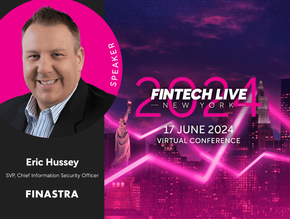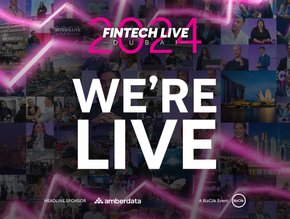Mobile Banking Poised to Enter new era of Innovation

There can be no doubt that the rise of mobile banking has changed the way both individuals and businesses interact with their respective financial institutions over the past decade or so.
A trend propelled by the prevalence and availability of smartphones, customers these days can manage their finances in various ways at the touch of a button – on the go or from the comfort of their own homes.
The level of accessibility and convenience on offer across financial services has reached new heights thanks to mobile banking advancements, which have simultaneously encouraged unprecedented fintech innovation.
Technologies like P2P payments and biometric authentication, to name just a couple, have been spurred on by mobile banking, emphasising the need for traditional banks to adapt and modernise – or find themselves being left behind.
Look no further than a recent study from Juniper Research, which forecasts that the total value of digital wallets transactions will rise by a staggering 77% in the five years from 2023 to 2028, from US$9tn to more than US$16tn.
The age of hyper-personalisation
It’s often said that we’re more likely to get divorced than change our bank account.
But one thing mobile banking has certainly hammered home is the immense need for financial institutions to tailor their offerings. Fail to do so and they risk losing huge swathes of their previously-loyal customer base.
‘Personalisation’ may have always been a banking buzzword, but we’re reaching the realm of hyper-personalisation, where there is increased pressure to understand and meet the needs of each individual.
“Customer experience is more important than ever and mobile banking has paved the way for banks to excel,” asserts Louise Potts, Head of Banking Customer Advisory at the software giant SAS. “Not only is it more accessible, it’s also more convenient. From the palm of their hand, customers can manage transactions, income and outgoings in real time.
“Personalisation and mobile banking go hand-in-hand. For one, users can set up tailored notifications based on what matters to them, whether it’s encouraging them to meet their saving goals or reminders to pay bills throughout the month. And, as the demand for enhanced personalisation grows, the wider industry is taking note of the innovations within mobile banking.”
A world of exciting opportunities
This theme of tailoring financial services is also raised by Michael Wallis-Brown, VP and Global Head of Mobile Financial Services at Ericsson, who has more than 15 years of experience under his belt across fintech, mobile banking payments and consumer mobile applications.
Wallis-Brown is particularly enthusiastic about the integration of open APIs within interconnected ecosystems, an innovation “driving remarkable growth in mobile money”.
He adds: “This evolution in embedded finance promises a seamless banking experience for customers, offering tailored financial services through a single platform.
“Moreover, it presents an exciting opportunity for non-financial merchants to integrate advanced financial solutions, leading to new revenue streams.”
Operating on the same wavelength is Brandon Till, Director of Business Solutions at Soldo, one of Europe’s fastest-growing fintech firms.
His belief is that any challenge associated with mobile banking can be seen as an opportunity for innovation, but he is most excited about mobile banking as part of connected finance – namely using open banking APIs to connect tools and exchange data for more individuals.
“I think there is potential to go one step further,” says Till, “and use APIs to simplify international transactions and integrate financial services into everyday apps – like connecting budgeting and shopping apps.”
Far from a level playing field
Not everything in the mobile banking space is worth celebrating though, as Till is keen to point out.
While the positives are undoubtedly plentiful, especially when it comes to accessibility and convenience, the reality is that access around the world remains imbalanced due to the fact not all customers have access to a smartphone or the internet connection required to benefit from online services.
The older generation, for example, is one demographic where members may find themselves excluded for this reason.
“Security is another issue,” adds Till, “as with convenience comes vulnerability. Online phishing scams are getting more sophisticated, so users of mobile banking are at risk.
“Finally, although banks are transforming digitally and moving their services online, some people still value a trusted human connection when managing their money and making complex financial decisions. Mobile banking might lack this human touch.”
The death of the physical branch
This leads neatly onto the most hotly-debated topic surrounding banking at a consumer level: the slow death of the physical branch.
According to data from US regulator the Office of the Comptroller of the Currency (OCC), financial institutions filed notices to close more than 1,500 branches across the country in 2023, while outlining their intentions to open just 472.
Across the pond, independent consumer organisation Which? says banks and building societies have closed a staggering 5,835 physical branches in the UK since January 2015, at a rate of around 54 a month.
Potts explains: “Difficulties with internet access, finding a solution online and navigating complex financial matters—especially those involving extensive paperwork or guidance—are all reasons someone may prefer an in-branch consultation.
“A hybrid banking approach, whereby people and businesses have access to in-person and online banking capabilities, is the way forward, enabling customers to manage their finances from wherever suits them most.”
Increased integration on the horizon
What next, then, for mobile banking?
The proliferation of AI and widespread adoption of open banking are a couple of trends anticipated to underpin the mobile banking landscape over the coming years.
Wallis-Brown is sure that the continued evolution of digital identity, furthering a secure and seamless user experience, will prove to be a critical piece of the puzzle. He says advancements in identity management to further implement ‘know your customer’ (KYC) processes can ensure compliance and security in a rapidly-evolving financial landscape, while implementing a more transparent manner of managing data usage.
He adds: “Platforms such as the Ericsson Wallet provide a unique standpoint in their ability to manage the converging ecosystems of traditional banking versus mobile, payments versus fintech and emerging versus established markets.
“We’re at the precipice of a realised digital future where people, assets and value are able to connect seamlessly.”
Till, meanwhile, foresees mobile banking even more interwoven with our daily lives, seamlessly integrating with services both financial and non-financial.
“I expect to see budgeting within shopping apps, AI-powered spending analysis and instant personalised loan approvals,” he says.
“However, physical branches won't entirely vanish. They will evolve to cater to specialised needs, offering human interaction and expert advice when customers need to make complex financial decisions, or for those seeking trust-based relationships.”
******
Check out the latest edition of FinTech Magazine and sign up to our global conference series – FinTech LIVE 2024.
******
FinTech Magazine is a BizClik brand.







